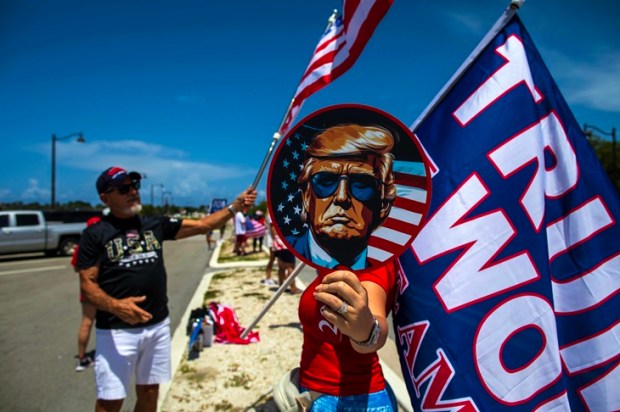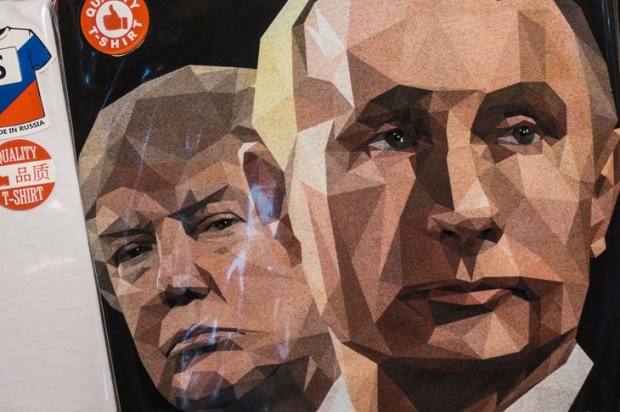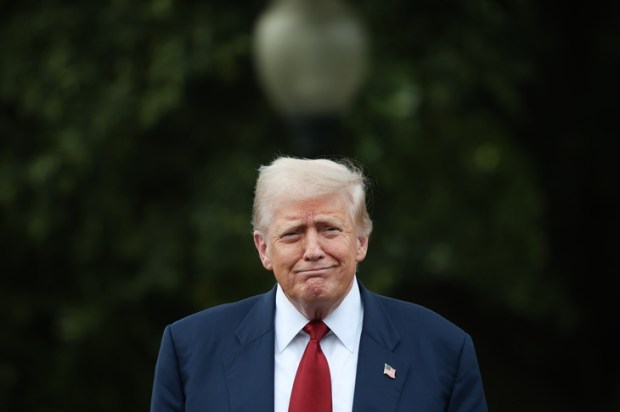The implementation of hegemony, since the eclipse of British maritime Empire, has been the prerogative of the US. There have been variations on the theme – sometimes Hawks, sometimes Doves – but the essential nature of Geopolitics (and GeoEconomics) has been a symphony about ‘hegemony’.
This has dominated US thinking since the second world war and effectively the foreign policy remit throughout the Cold War.
The idea of the ‘American Pacifier’ put forward by John Mearsheimer was that the US would support intervention in foreign policy when the appearance of a rival hegemon appeared on the horizon, in Europe or North Asia. In this light the appearance of Donald Trump on the horizon means a sea change in transparency; there is now no ambivalence in US foreign policy; the hegemon is back in pole position. This is why GeoEconomics now trumps GeoPolitics. It is foreign policy without the mask of Janus.
There is clear correlation between GeoEconomic enrichment and the strength of the hegemon. For the British, it had been mercantile wealth. Yet now, as the panorama of the 21st Century rises in the East, and ideology is eclipsed and the sons of Machiavelli charter the ocean’s course. All of the previous ideologies were essentially materialist, what Spengler called the Faustian Age; the coming together of the various strands of politics, from Marxist or Liberal, in the 20th Century, means the conflation of all ideology into the materialist one. China is the emblematic example of the process. Liberalism’s denouement is not some progressive Utopia or end of history, of human rights, or the International Rules Based Order – it is merely a continuation of the same, a will to power. Trump has taken up the Mephistophelian chalice; the question is if he understands the Faustian fire raging within it.
The Cold War consensus which had kept the Western alliance together is under strain. The view from the new White House administration is that the new hegemonic threat is from the Russia-China axis. Philip Zelikow warned:
‘The structure of world politics is evolving in ways that challenge American global power more than at any time since the end of the Cold War. The United States now faces risks to its interests across East Asia, Europe, and the Middle East. To make matters worse, China, Russia, Iran, and North Korea are increasing their support for one another. Historical precedents from the 1930s and the early Cold War suggest that even deeper cooperation among them is possible and that a more coherent bloc determined to blunt and roll back US power worldwide might develop’.
The nature of GeoEconomics and its relationship to GeoPolitical power means that foreign policy becomes a zero sum game of winners and losers.
The Russians and Chinese have a trust deficit with the US and there is little chance of rapprochement. Whilst Trump’s policy so far has been engagement of threats to Geopolitical minnows such as Panama and Canada, this method of engagement will not muster a similar response with the Sino-Russian alliance. Yet the Eurasian alliance is not as strong as it may appear, despite the bluster of a ‘no limits’ partnership. China also views European and Middle Eastern conflicts (drawing in US attention and resources) as a win-win unlike Russia which has bodies on the ground. Consequently, the Trump administration will pressure the Chinese in new areas of attack such as the Arctic, AI, and attempts to split the Sino-Russian entente terrible. Trump, however, will be aware, also due to the new weaknesses of the Chinese economy, that the so-called axis of China-Russia-Iran and North Korea, is not as unified as often feared. The Eurasian melange is riven with historical tensions. Yet the hawks flying around the White House may overplay the threat to US Hegemony.
What Trump has understood about the Hegemon is that it requires a two-pronged approach. The first is economic in that hegemonic nations need to position the currency as king. This is aligned with the tariffs policy – to reduce national debt and further strengthen the dollar stranglehold. This will mean that the second facet; the putting out of GeoPolitical fires requires less attention, as nations are coalesced into the system. This differs to Globalisation, however, as it disavows the collateral baggage: human rights requirements, equity in trade relations, and International Courts. Hence Trump sees positive affirmation of self-interest rather than acknowledging the Rules Based International Order which is largely imaginary in the minds of liberal elites. It is also not subscribed to by the emerging behemoths of the global south: South Africa, India etc. Trump understands that China is far more involved in the world trade system than its supposed allies.
GeoEconomics and Globalisation, by its very nature veers towards strengthening bargaining positions and establishing hegemony and monopoly. The tradition from the General Agreement on Tariffs and Trade (GATT) agreements and into the WTO, was that tariffs were reciprocated (the MFN rule – Most Favoured Nation). Therefore, exports of identical products were given the same tariffs in a ‘quid pro quo’. Therefore, larger nations, who may bully their way to greater deals would be equalised through reciprocation. The MFN principle reduces large countries forcing advantages from smaller nations. Now, in Trump’s second term, through the use of the Trade Expansion Act 1962, section 232, Tariffs on goods are possible for national security purposes. However, the East Asia Forum has forecast the detrimental nature of these tariffs:
‘Those tariffs ‘are expected to reduce long-run US GDP by 0.22 per cent (US$55.7 billion), decrease wages by 0.14 per cent and eliminate 173,000 full-time equivalent jobs’, while not even achieving their aims of ‘fixing’ the US trade deficit because ‘tariffs on a country’s goods will reduce demand for those goods but also for the currency associated with them, effectively depreciating the foreign exporter’s currency and appreciating that of the country imposing the tariff’. US exports became less competitive as the dollar appreciated under Trump’.
Hence what is the logic for Trump 2.0? This is the core to GeoEconomics as it implies a welding of both economic and political. It will mean particular trade deals between nations. Between those who subscribe to the greater agenda, to those who play the game.
The US, with its dominant economy is best positioned to face the downturn. This downturn for the US will be tempered by considerable transactional benefits of dominion: rare metals in the Ukraine, the deposits of the Arctic regions. A holiday villa on the Cote de Gaza. That agenda is a cultural one; in fact, Trump sees it as a civilisational one.
From his perspective free trade and the previous globalised liberalism forced on nations a system of values. These values he seeks to overturn. There is truth in this sentiment – in that various cultures have differing traditions and values.
Trump sees the world at a liberal tipping point; the crash of a once dominant civilisational outlook inspired by the Enlightenment. The ebbing tide has retreated from this lulling safety and only the roar of the ocean beckons.
Brian Patrick Bolger. He has taught political philosophy and applied linguistics in universities across Europe. His articles have appeared in the US, the UK, Italy, Canada and Germany.

























